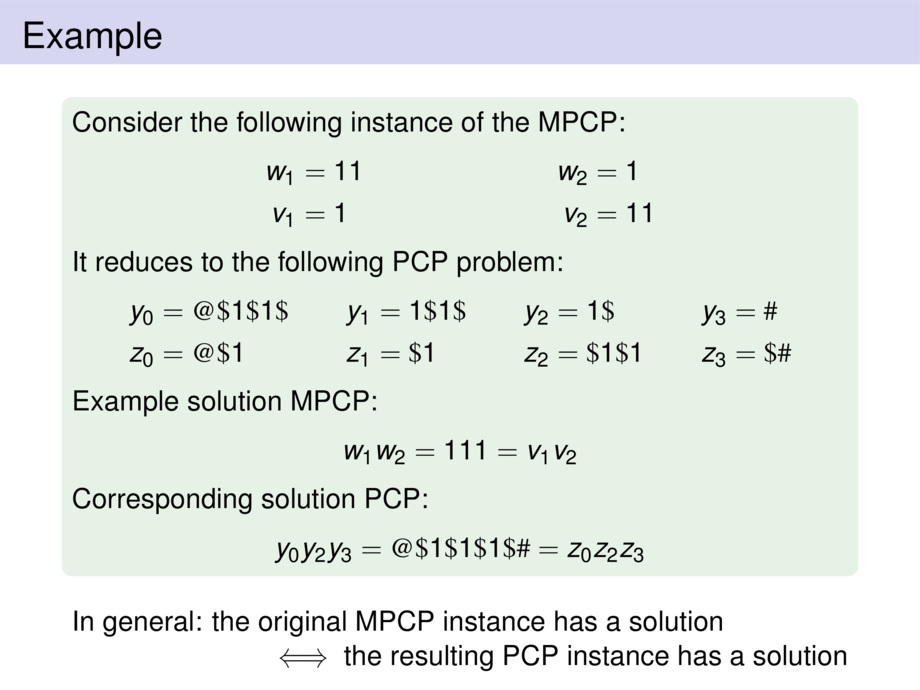



































































































78/123
\begin{frame}{Example}
\begin{exampleblock}{}
Consider the following instance of the MPCP:
\begin{talign}
w_1 &= 11 & w_2 &= 1 \\
v_1 &= 1 & v_2 &= 11
\end{talign}
It reduces to the following PCP problem:
\begin{talign}
y_0 &= @ \$1\$1\$ & y_1 &= 1\$1\$ & y_2 &= 1\$ & y_3 &= \# \\
z_0 &= @ \$1 & z_1 &= \$1 & z_2 &= \$1\$1 & z_3 &= \$\#
\end{talign}
\pause
Example solution MPCP:
\begin{talign}
w_1 w_2 = 111 = v_1 v_2
\end{talign}
Corresponding solution PCP:
\begin{talign}
y_0 y_2 y_3 = @ \$1\$1\$ 1\$ \# = z_0 z_2 z_3
\end{talign}
\end{exampleblock}
\pause\medskip
In general: the original MPCP instance has a solution\\
\hfill $\iff$ the resulting PCP instance has a solution
\end{frame}

